
Contents










Story · Written by Seong Hyekyung Photographed by Studio Kenn
A Province or a Museum?
Confluence of Culture and History
Humans have long dreamed of transcending time and space, leading to the invention of faster means
of transportation and thus the overcoming of spatial limitations to an extent. Because people still cannot
travel back or forward in time, perhaps this boosts the value of happy memories. Cultural remains
located throughout Gyeongsangbuk-do Province and their stories thus make the region more special.
Gyeongsangbuk-do Province is a hub of Korean history. The Wolseong-dong neighborhood of Gyeongju, the site of the Silla royal palace, is home to historical landmarks and priceless cultural assets that evidence Silla’s once-thriving civilization such as Donggung Palace, Wolji Pond, Gyerim, the royal tomb of Silla King Naemul and Cheomseongdae Observatory. Built as the royal Silla fortress in 101 C.E., Wolseong-dong is where the palace stood until the kingdom collapsed in 935. It had eight gates and housed numerous palaces, towers and shrines, thus the secret of the once prosperous kingdom is likely hiding here.
After walking down from the fortress, visitors often head toward Donggung Palace and Wolji Pond, the royal gardens of the Silla palace in eastern Wolseong-dong. The Silla royal court built a pond here and an adjacent palace to host banquets and entertain honored guests. Records say King Gyeongsun, the last Silla monarch, held a feast there. The nearby Daereungwon Royal Tomb houses 30 grave mounds as the largest tomb area in Gyeongju. The nightscape here with the moonlight elegantly glistening gives off a mystique that transcends time and space.
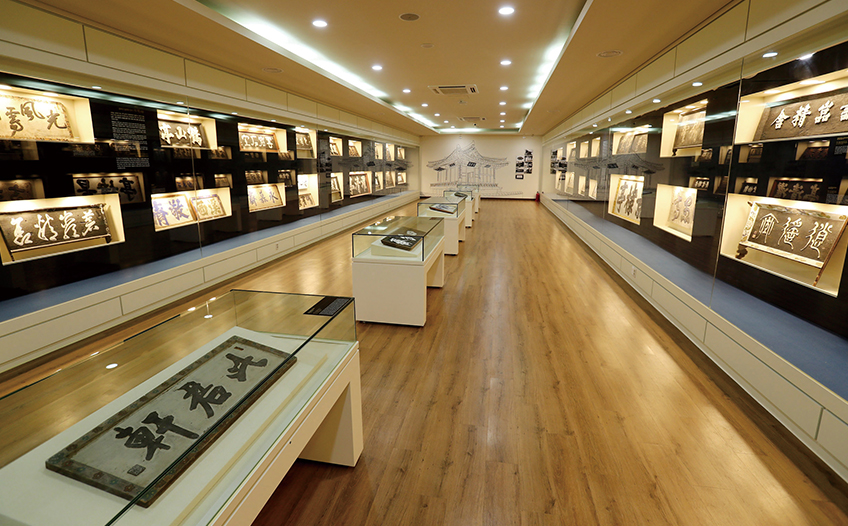
The Korean Studies Institute collects and exhibits culturally and historically valuable signboards. © 2017 The Korean Studies Institute
The Korea Studies Advancement Center in Andong, Gyeongsangbuk-do Province, researches the Confucian culture of the Joseon Dynasty (1392-1910). As a collector of privately owned archives, the center in 2015 contributed to the registration of Confucian books as part of the UNESCO Memory of the World Program. The Confucian Culture Museum of the center is the nation’s only museum exclusively for Confucianism. The nine exhibit rooms, including one for special exhibitions and another for planned exhibitions, allow onlookers to understand Confucian culture and views at a glance, as well as the formation, progression and academic lineage of Confucian culture in East Asia as well as Korea. Confucianism was not only Korea’s religion and principles but also its ideology and culture.

Woljeonggyo Bridge from 1,300 years ago in Gyeongju was restored in 2013, attracting visitors from all over the world with its aesthetic and cultural value. © 2018 Gyeongju-si
Connection between Myth and History
A small rocky island adding a beautiful touch to the scenery floats in waters about 200 meters away from the coast. The center of the island, hollow like a pond, is where four artificially made canals meet, pointing to the four cardinal directions. The water coming in from the east flows back to the sea through a waterway pointing west. The water inside the rock is thus always flowing steadily despite the fierce waves of the sea. This is the site of Daewangam, the underwater grave of Silla’s 30th monarch King Munmu (661-681).
Inheriting the throne from his father, King Taejong Muyeol, Munmu conquered the Goguryeo Kingdom and thwarted the invasion of China’s Tang Dynasty in unifying the Three Kingdoms. In addition, he revamped central and regional administration as well as the military system to set the foundation for a national structure. According to the “History of the Three Kingdoms,” King Munmu left a will requesting that his body be cremated in the traditional Buddhist way and his ashes scattered in the East Sea, saying he would become a dragon to protect the country from Japanese invasion. His son and successor, King Sinmu, honored his father’s wishes and held a royal funeral on top of a large rock at the entrance of the sea. The tranquil waters, with the occasional sounds of waves, demonstrated the king’s desire to become a patriotic dragon and protect the nation even after his death.
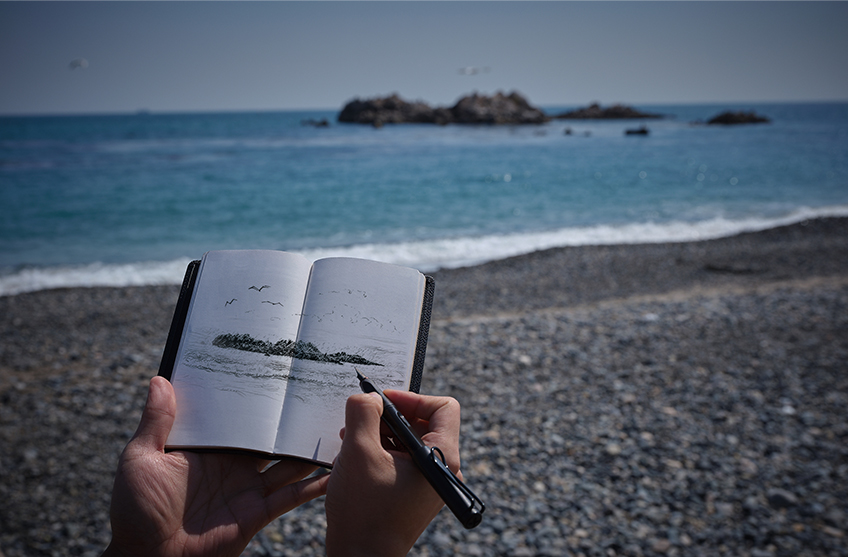
The King Munmu Tomb is the only underwater grave in the world. Here lies the king’s hope to protect the country from foreign invasions even in his death.
Coexistence of Simplicity and Depth
Andong is considered the capital of Korean spiritual culture, and the old houses throughout the city represent the history of such a culture. The nation’s longest wooden pedestrian bridge is found over the Nakdonggang River in the eastern part of Andong, while Woryeongjeong Pavilion sits in the middle of the bridge. Mountains surround the river and dam. The shoe-shaped bridge commemorates the love of a woman who made a pair of hemp rope sandals using the hair of her late husband. This tragic tale gives a more calm and peaceful edge to the scenery.
The Confucian academy Dosan Seowon across Andongho Lake was built by the students of Yi Hwang, a renowned Confucian scholar in Korean history, to commemorate his works and virtue. The lecture hall Dosan Seodang is where Yi both studied and taught Confucianism. In 1546 at the age of 46, he resigned from his government position and returned to his hometown to teach aspiring scholars from all over the country. Dosan Seodang was constructed in 1560 as Gyesan Seodang, built in 1551, could not handle the rising number of students. All surviving buildings at Dosan Seowon are simple and plain, traits often used to describe Yi’s character. He famously sang, “How do the mountains stay green for ages and the clean waters continuously flow day and night? We, too, will ceaselessly stay fresh and cheerful.” Though times have changed, Dosan Seowon retains its elegance and continues to protect its spiritual heritage.

Yeumteo is a history and cultural experience center, with its structure and arrangement inspired by Dosan Seowon. © 2018 Andong-si
Harmony of Tradition and Learning
The four famous muldori villages are Hahoe Village in Andong, Hoeryongpo Village in Yecheon-gun County, Seonam Village in Yeongwol-gun County and Museom Village in Yeongju. A muldori village has three sides surrounded by water, so when viewed from a higher location, the village looks like an island. Though this characteristic has culturally separated the region from others, it has also enabled the keeping of the region’s traditions intact. To enter such a village requires walking over a single log bridge across Naeseongcheon Stream that wraps around the town. After passing by a broad sandy beach on the side of the stream and through a thickly wooded forest, a tranquil village appears.
The history of the village dates back to 1666. Park Su of the Park Ban-nam family first settled in the area, followed by the Kim Seon-seong family who moved here and married the Parks. The town remains a family village even to this day. About 100 residents from 40 households live here and still follow Confucian traditions.
The village has three treasures. The first is its beautiful landscape, second the old houses standing in the midst of it, and the third and greatest is the village’s open spirit. Adoseosuk, established during Japanese occupation of Korea, was the hub of the Korean independence movement where residents studied Hangul and agricultural technology until 1933, when it was shut down by the Japanese. Records say people of all ages and social classes came here to learn, a surprising development given the prevalence of Confucian culture at the time. Residents of Museom Village, who valued learning more than social status, thus promoted a type of social equality.
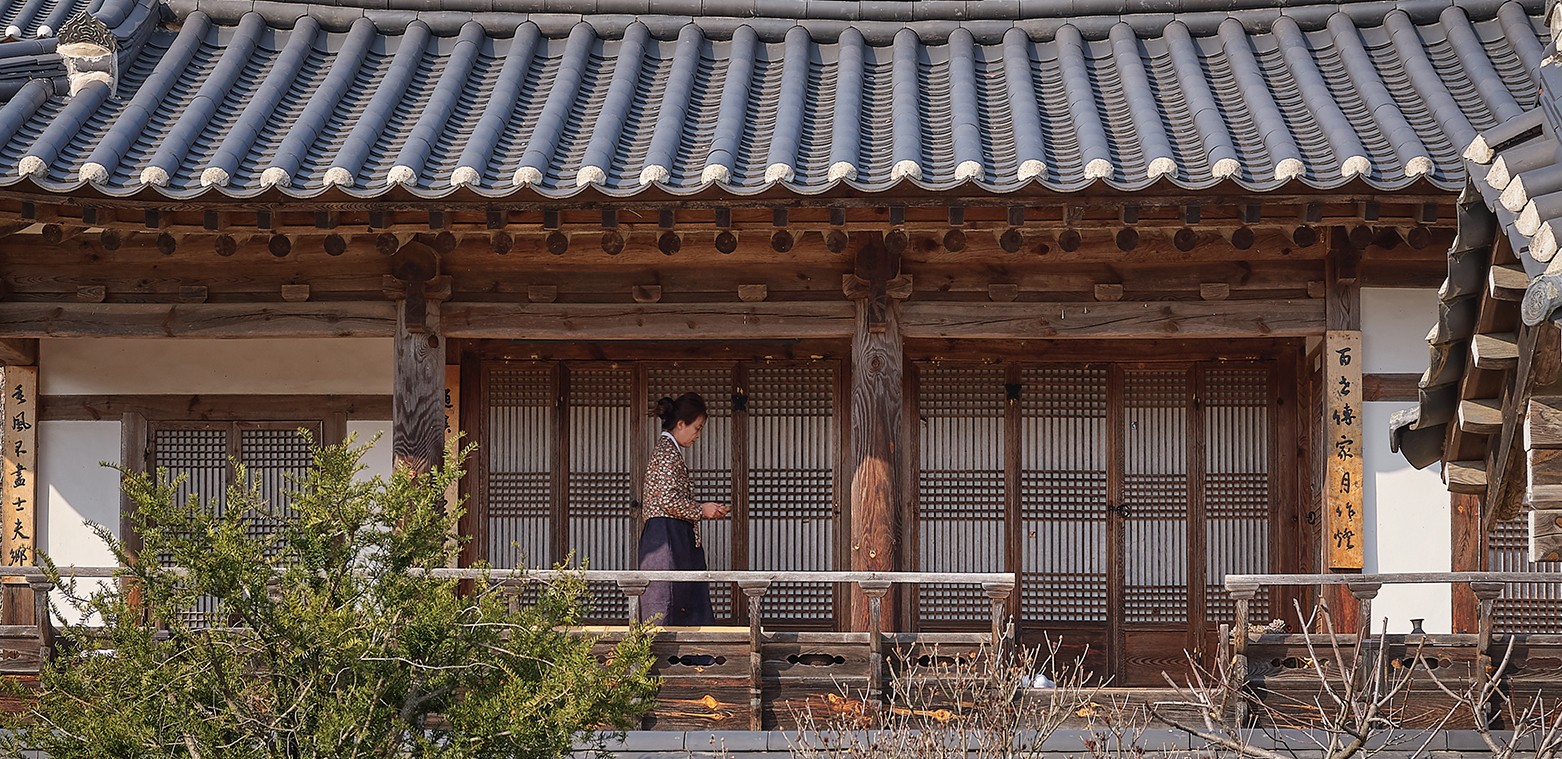 In Andong, different family clans have formed a village and preserved their tradition to present times.
In Andong, different family clans have formed a village and preserved their tradition to present times.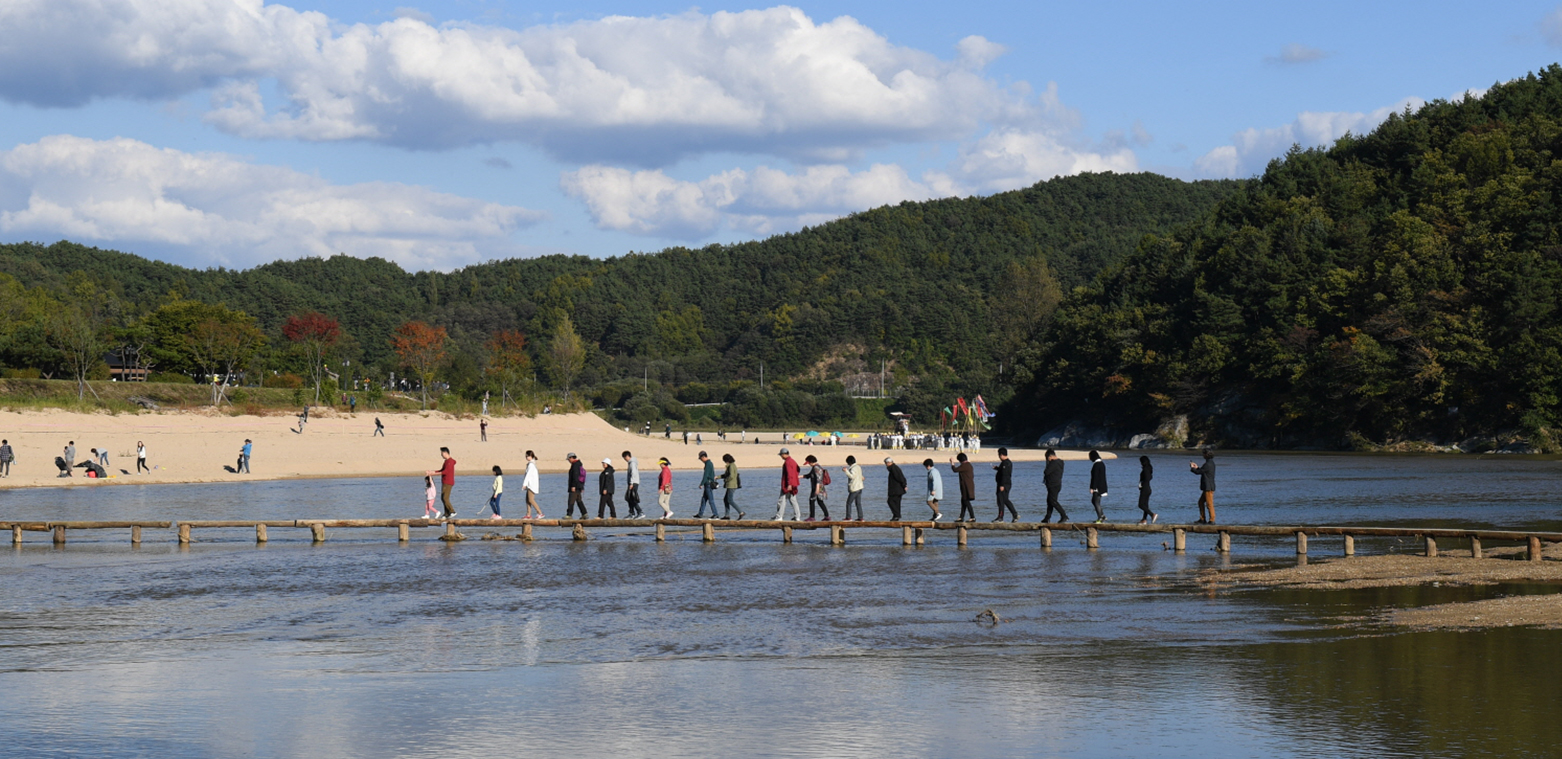 You will find it thrilling to walk on the single log bridge, being careful not to fall and dodging other people in Museom Village in Yeongju. © Yeongju City
You will find it thrilling to walk on the single log bridge, being careful not to fall and dodging other people in Museom Village in Yeongju. © Yeongju CityWhat Unites Cultures
One of the most beautiful old paths in Korea is in Mungyeong. Saejae means a “hill difficult to pass over, even for a bird.” Mungyeong Saejae, a mountain pass in Joryeongsan Mountain Ridge of the Baekdudaegan Mountain Range, is the best path that connects Hanyang (old name for Seoul) and the Yeongnam region spanning the modern-day provinces of Gyeongsangbuk-do and Gyeongsangnam-do and the self-governing cities of Busan, Daegu and Ulsan. Thus the pass has played a key role in social, cultural and economic circulation and national defense for ages. Mungyeong Saejae was also the center of cultural exchange for areas far from the capital such as the provinces of Gangwon-do, Chungcheong-do and Gyeongsang-do. Because of the back and forth travel of supplies, inter-regional mingling of cultures led to the creation of a new culture.
The 15-km journey of walking through Mungyeong Saejae starts from the Museum of Old Roads and passes Joryeong Mungyeong’s three gateways before returning back to the starting point. A 10-minute walk on the comfortable red clay path brings one to Mungyeong Saejae’s Gateway 1, which is called Juheulgwan. The road is along a valley where clear water flows and visitors can even comfortably walk barefoot while enjoying the beautiful scenery. Grabbing immediate attention, however, is a gigantic fortress wall blocking the canyon. This is the largest among the pass’ three gateways and its original form has been well preserved, showing how this fortress was blessed with natural barriers for defense.
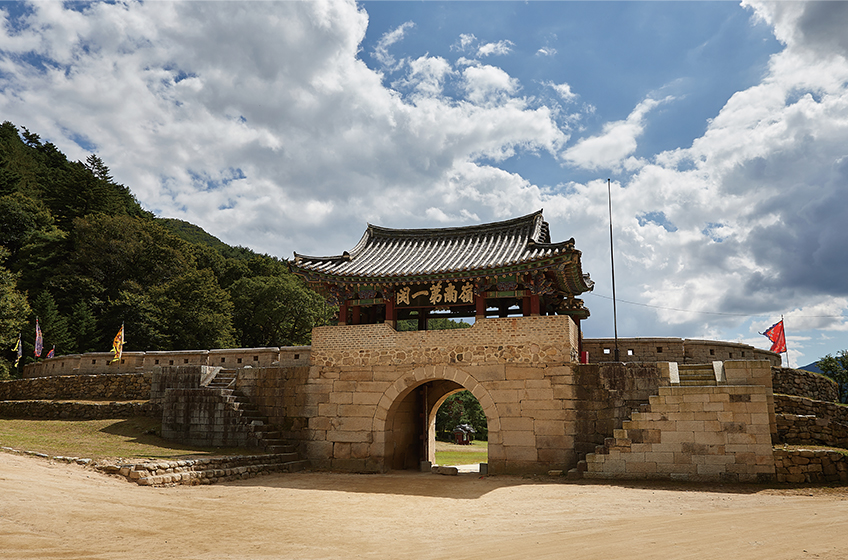
Mungyeong Saejae Hill was a primary transportation network center of Baekdudaegan Mountain Range as well as a bridge to connect different provincial cultures in Korea.
Passing through Gateway 1, a village comes into view on the left side featuring fancy royal palaces and tile-roofed and thatched houses. This film set for dramas has been reproduced to look exactly like a Joseon era village. From Gateway 2, the road turns quite steep but this hardly prevents visitors from reaching the final destination, Gateway 3 or Joryeonggwan.
Other Articles















